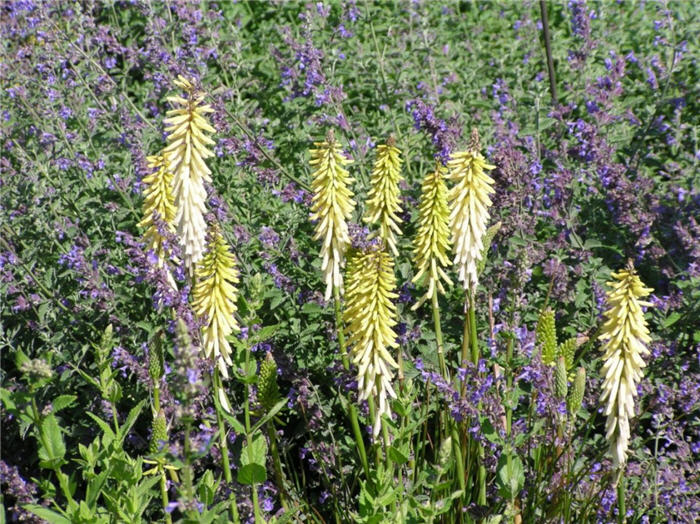| Botanical Name: Kniphofia 'Little Maid' | |
| Common Name: Little Maid Torchlily |

-
Anatomy
-
Culture
-
Design
Plant Type
Perennial
Height Range
1-3'
Flower Color
Yellow
Flower Season
Summer
Leaf Color
Green
Bark Color
n/a
Fruit Color
n/a
Fruit Season
n/a
Sun
Full, Half
Water
Low, Medium
Growth Rate
Moderate
Soil Type
Sandy, Clay, Loam
Soil Condition
Average, Rich, Well-drained, Dry
Soil pH
Neutral, Basic
Adverse Factors
n/a
Design Styles
English Cottage, Mediterranean, Ranch, Spanish
Accenting Features
Showy Flowers
Seasonal Interest
Summer
Location Uses
Perennial Border, Shrub Border, Foundation, Patio, Walls / Fences
Special Uses
Cut Flowers, Small Spaces
Attracts Wildlife
Hummingbirds
Information by: Stephanie Duer
Photographer:
Photographer:
-
Description
-
Notes
'Little Maid' is a kniphofia cultivar selected for its soft, lemony yellow flowers tinged with orange. The flowers are arranged in whorls along a thick, rigid stem and held above the foliage, which is green, fleshy, and sort of yucca-like (without the spiny tip). The foliage clump stands about 15 inches tall (and 15 to 18 inches wide) and the flower spire rises to 18 to 24 inches. A distinctive addition to a sunny border or rock garden. And its lack of a sharp tip makes it a friendlier choice for a parkstrip. Loved by butterflies.
Kniphofia grows best in very well drained soil, preferably sandy-loam soils, in full sun to mostly sun. They will grow in a clay soil that has been amended with compost. Boggy or wet soils will be their demise. Deadhead to prolong bloom and to keep the plant looking tidy. Also commonly called red-hot poker, this name gets a little confusing when used with cultivars that aren't, well, red, so we prefer the common name torchlily. An excellent cut flower. Sometimes evergreen in a mild winter or where planted to maximize winter sun.